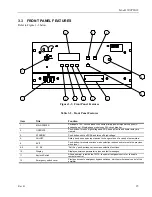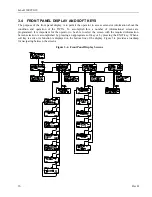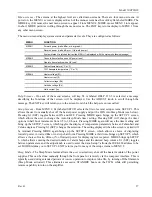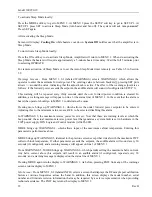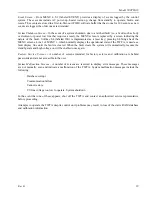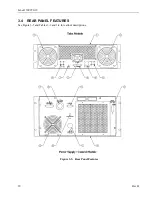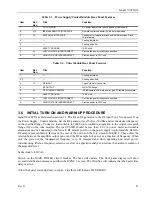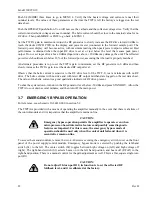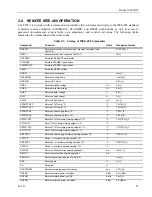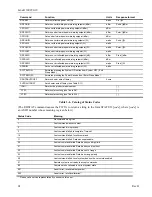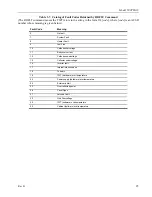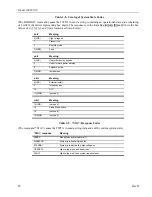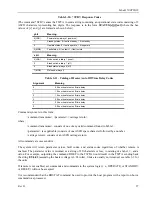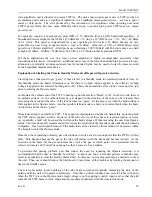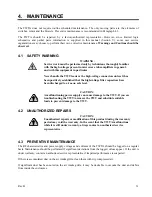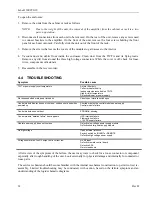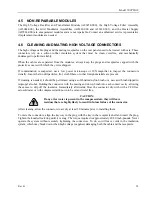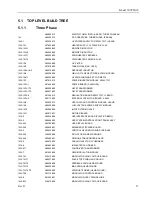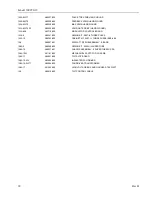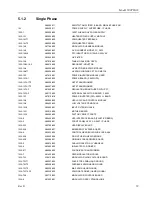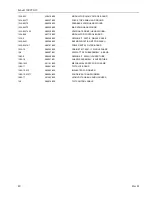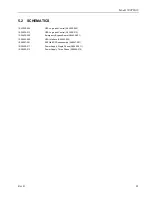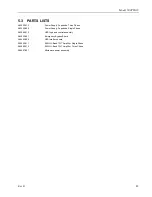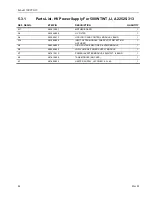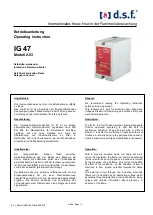
Model 500T8G18
Rev B
29
state amplifiers, and is inherent in present TWTAs. The noise may surprise users new to TWTAs when it
accumulates and results in a significant indication in a broadband measurement device – such as a power
meter or field probe. The error produced by this indication is not significant when operating near rated
TWTA power levels, but may cause difficulty when trying to operate high power TWTAs at low output
power levels..
For example, consider a hypothetical typical NPD of –76 dBm/Hz, from a 4 GHz bandwidth amplifier. A
broadband detector might see the NPD as [-76 dBm/Hz + 10 (log 4 x 10
9
) BW factor = -76 + 96=] +20 dBm,
or 0.1 watts. This power is insignificant for a user operating at 200 watts (+53 dBm), but may be very
noticeable to a user trying to operate below 1 watt (+30 dBm). [One watt is 0.5% of (23dB below) rated
power for a 200-watt amplifier.] A field probe user obtaining a 200 V/M field with 200 watts, may see a field
as high as [53dBm – 20dBm = 33dB below 200 V/M=] 4.5 V/M due to this hypothetical NPD.
For these applications the use of a lower power amplifier is highly recommended, especially when
considering safety issues. Alternatively, additional power loss in the form of an added high power microwave
attenuator, or preferably an increased space loss for radiated fields, may be used to lower the noise received
by the broadband measurement device.
Explanation of Limiting the Time in Standby Mode and of Repeated Operate Selection.
Traveling wave tubes tend to get “gassy” if they are left in a Standby mode for extended periods of time. In
this Standby mode, the heater (filament) is on but there is no high voltage applied to the collector (or high
voltage is applied to the collector but the grid is off). This is the normal state after a tube’s warm up time, just
prior to entering the Operate mode.
In this state the cathode end of the TWT is heating up but the electron “Beam” is off. In other words, there is
no cathode current. As the cathode heats up, gas trapped in the structure of the tube can be released, thus
corrupting the vacuum of the tube. If the tube become too “gassy”, arcing may occur when the high voltage is
fully applied in the Operate mode. Another possible failure mode is a body over-current fault when the beam
is turned on and the tube is “gassy”.
Occasional arcing is normal for a TWT. The support components are designed to handle this, protecting both
the TWT and its support circuitry. However, if the tube arcs two or three times in rapid succession, or worse
yet repeatedly, a fault will be sensed that will shut the high voltage off, thus removing the unit from Operate
status. The remedy usually recommended is to repeat the selection of the Operate mode until the unit remains
in Operate. It as been found that most of the faults that can be cleared by this method will be cleared within
25 attempts to enter the Operate mode.
Once the tube is operating normally, gas will continue to evolve at a slow enough rate that the TWTA will not
fault. This happens because the gas in the tube will interact with the beam and become ionized. As the
electrons in the beam hit the gas molecules they ionize the gas, at which point it is accelerated into the
collector structure and “buried” deep enough so that it ceases to be a problem.
To preclude this gassing problem, and thus reduce the need for repeating the Operate selection, it is
recommended that the time in Standby be limited – to about one hour. Extended periods in Standby may
result in an inability to clear the fault by this method. In this case, service measures may be needed to correct
the unit. Thus, users should reduce the likelihood of occurrence of this problem by limiting the amount of
time in the Standby mode.
The service measures involve pulsing of the tube beam current and gradually increasing the duty of the
pulsing until the unit will operate continuously. Note that a similar condition can exist for tubes with grids
when the TWTA is in the Operate mode (high voltage is on) but gating (control) input is set so that the grid
turns off the TWT beam current. Operational procedures should also limit the time in this mode.
Summary of Contents for 10012342
Page 2: ......
Page 4: ......
Page 8: ......
Page 12: ......
Page 20: ......
Page 44: ...Model 500T8G18 30 Rev B ...
Page 48: ...Model 500T8G18 34 Rev B ...
Page 50: ...Model 500T8G18 36 Rev B ...
Page 56: ...Model 500T8G18 42 Rev B ...
Page 70: ...Model 500T8G18 56 Rev B ...
Page 72: ......

